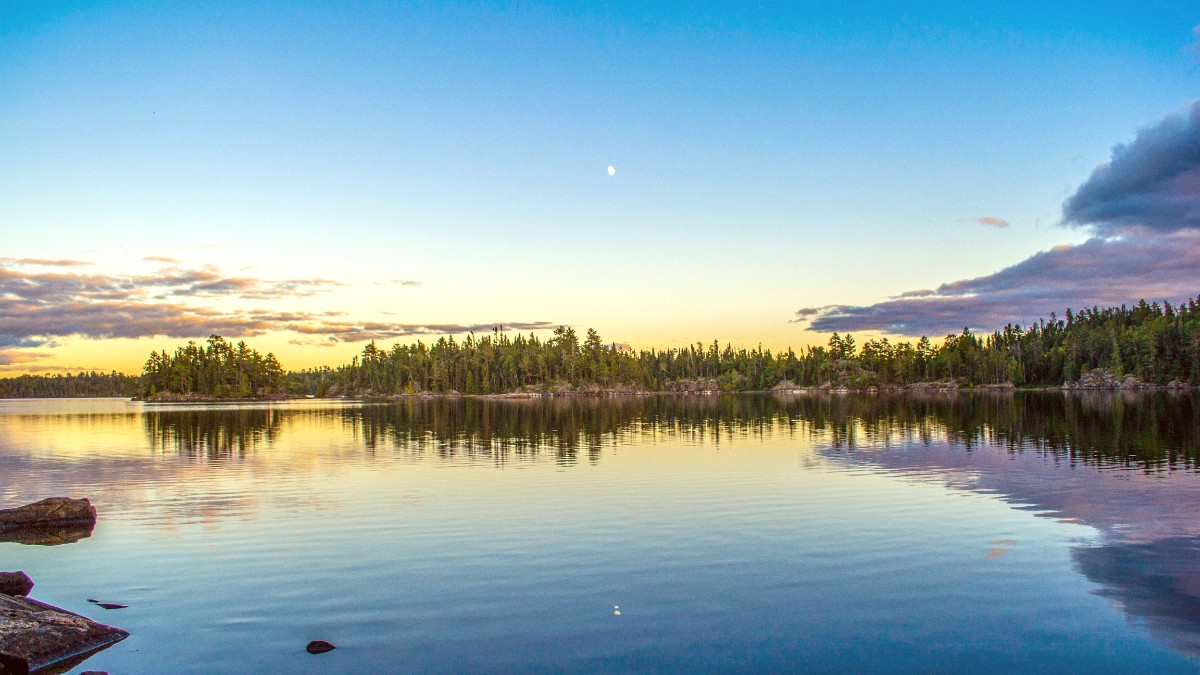
Minnesota, USA
Severe thunderstorms pose a risk during summer. These storms often bring lightning and strong winds, creating dangerous conditions on open water or felling trees. Monitor weather forecasts and seek immediate shelter on land if a storm nears.
Hypothermia danger in all seasons, even summer, due to cold water immersion or inadequate layering in wet conditions. Wildfires can occur during dry periods. Check for fire restrictions before your trip.
(Mid-June-Aug)
Warmest temperatures for swimming and comfortable camping. All services operate.
Highest permit demand, most crowded campsites, peak insect season.
(May-Early June, Sep-Oct)
Cooler temperatures, beautiful fall colors (Sep-Oct), fewer crowds, decreasing insect activity (Fall).
Unpredictable weather (potential for snow/ice), some services may have reduced hours.
(Nov-April)
Extreme solitude, unique winter activities (ice fishing, cross-country skiing, snowshoeing), stunning snowy landscapes.
Extreme cold, specialized gear and experience needed, limited access, most services closed.
Canoeing and Camping: June through September offer the most accessible and generally comfortable conditions. Fishing: May, immediately after ice-out, and September present opportunities for active fish. Wildlife Viewing: Spring and Fall offer clearer visibility due to less foliage. Photography: Fall delivers peak foliage colors, while winter shows stunning snowy landscapes.
June through September, accessible and comfortable.
May (after ice-out) and September for active fish.
Spring and Fall offer clearer visibility.
Fall for foliage, winter for snowy landscapes.
Mid-June to August is warmest but busiest.
The official currency in Minnesota and throughout the United States is the United States Dollar (USD, $). Credit cards are widely accepted in gateway towns, but carrying some cash for small purchases or tips holds value.
Estimates per person, daily, excluding airfare or vehicle depreciation.
Estimates per person, daily, excluding airfare or vehicle depreciation.
Maximizing group size splits the costs of the permit reservation fee, shuttle services, and group gear. Balance this with your desire for solitude; larger groups might impact the wilderness experience of others and require more planning.
Safety holds prime importance in the Boundary Waters. The remote nature of the wilderness means immediate assistance is unavailable. Plan for potential health issues and hazards.
No specific vaccinations are for the BWCAW beyond those for general travel to the United States. Consult your healthcare provider before your trip for routine vaccinations, like Tetanus, Diphtheria, and Pertussis (Tdap). Consider Hepatitis A and B vaccines if not current. Ensure routine immunizations are up-to-date.
Travel insurance is highly recommended. It covers medical emergencies, emergency evacuation (which can be very costly in a remote wilderness setting), trip interruption, and gear loss or damage. This coverage brings peace of mind.
These parasites cause severe gastrointestinal distress. Always filter, boil, or chemically treat all water drawn from lakes or streams before consumption. A reliable Water filtration system, like the Sawyer Products MINI Water Filtration System, belongs on your equipment list.
Filter, boil, or chemically treat all water sources.
Untreated water contains harmful microorganisms.
Mosquitoes, black flies, and deer flies are prevalent (late May through August). Use Insect repellent containing DEET or picaridin; for example, REPEL Sportsmen Max Insect Repellent 40% DEET offers strong protection. Open water and reflective surfaces mean high UV exposure. Use broad-spectrum Sunscreen with SPF 30 or higher, like EltaMD UV Clear Facial Sunscreen Broad-Spectrum SPF 46.
Wear Long-sleeved shirts, pants, and a head net. Check for ticks daily.
Wear a Wide-brimmed hat and Sunglasses. Sunburn seriously impacts comfort.
Hypothermia, a dangerous drop in body temperature, occurs even in summer due to cold water immersion (from an accidental capsize) or inadequate clothing in wet or cool conditions. Pack layers of non-cotton clothing (wool or synthetics), as cotton loses its insulating properties when wet. Always have dry clothes available. Minor injuries like blisters, cuts, scrapes, and sprains are common.
A comprehensive First aid kit, like the Adventure Medical Kits Mountain Series Hiker Medical Kit, is equipment.
Hyperthermia/Dehydration occurs in hot weather. Stay hydrated, take breaks.
| Category | Information | Notes |
|---|---|---|
| Healthcare Access | No formal healthcare facilities within the wilderness. Rely on group's first aid and communication devices. Gateway towns have clinics/hospitals. | Emergency medical services (EMS) accessible via satellite devices to 911. AirHelp for flight compensation. |
| Drinking Water & Food | All surface water from lakes or streams must be treated before drinking. Store all food and scented items properly to prevent wildlife encounters. | Use bear canisters or proper bear bagging. Cook food thoroughly, wash hands. Pack out all food waste. Consider Anti-theft bags for valuables. |
| Crime & Hazards | Crime is extremely rare within BWCAW. Main safety concerns relate to natural hazards: thunderstorms (seek shelter), wildfires (follow restrictions), wildlife (observe from distance, never feed), and ice conditions (avoid unstable ice). | Always completely drown any campfire before leaving it. Treat all wildlife with respect and caution. |